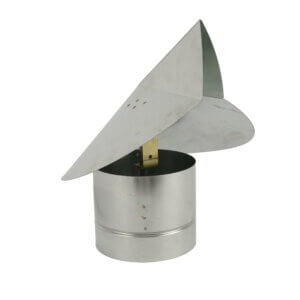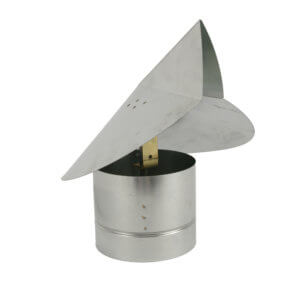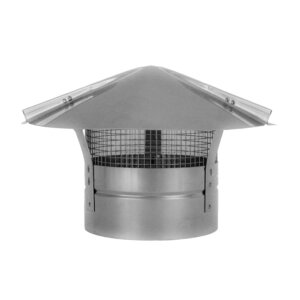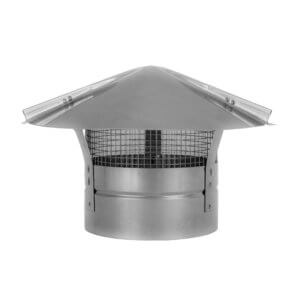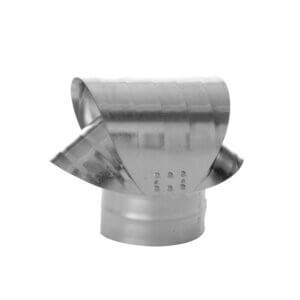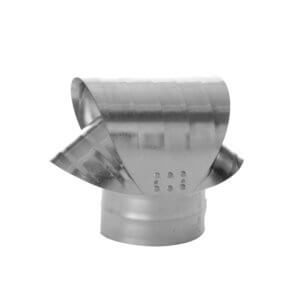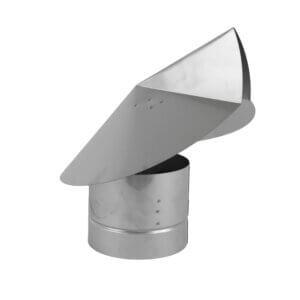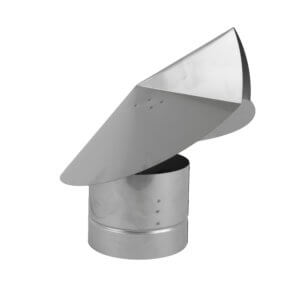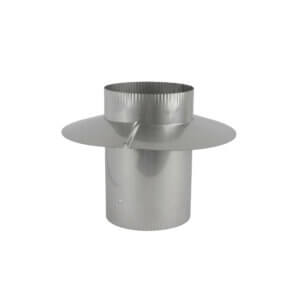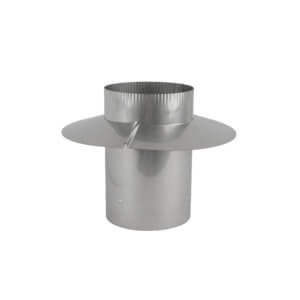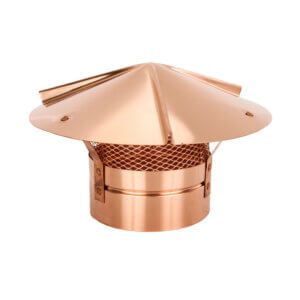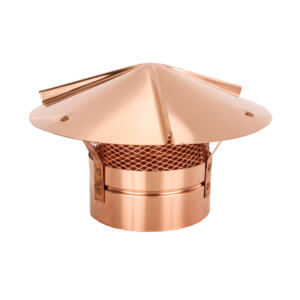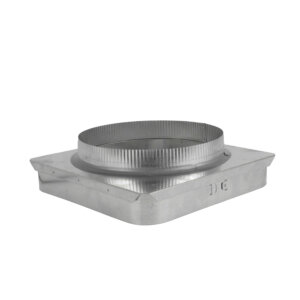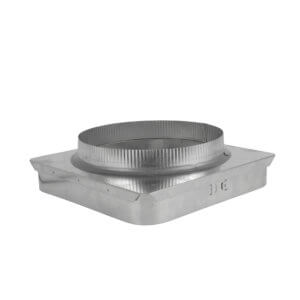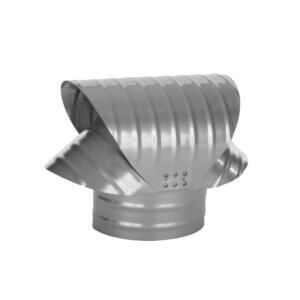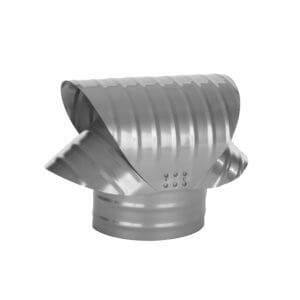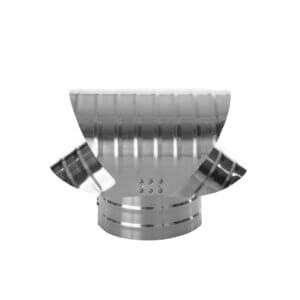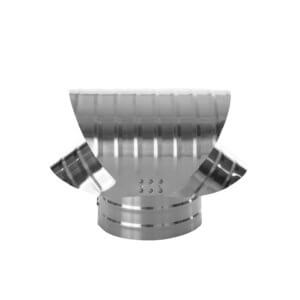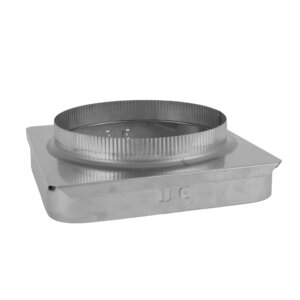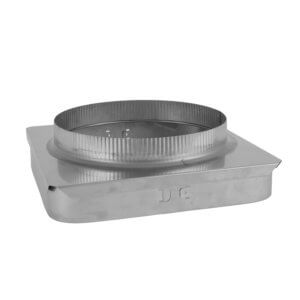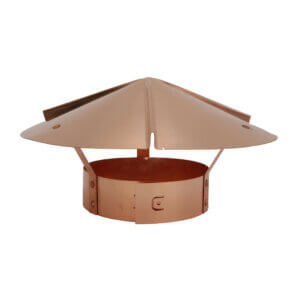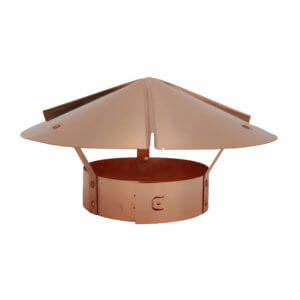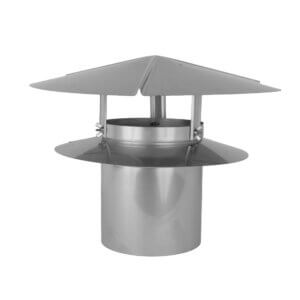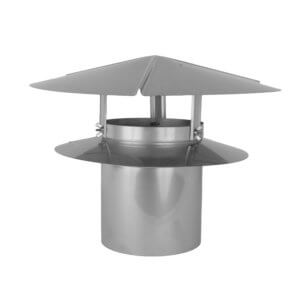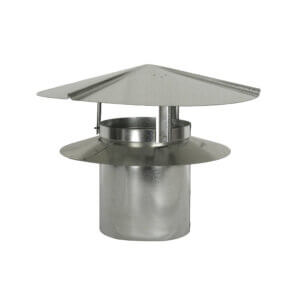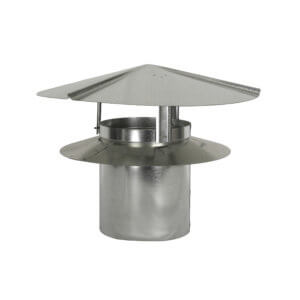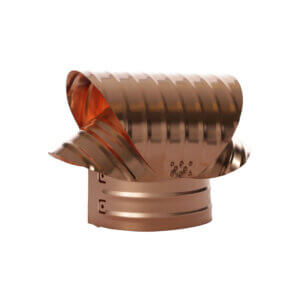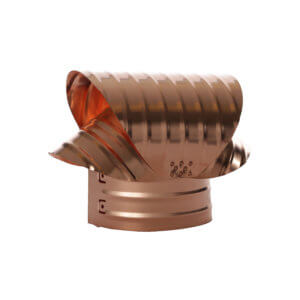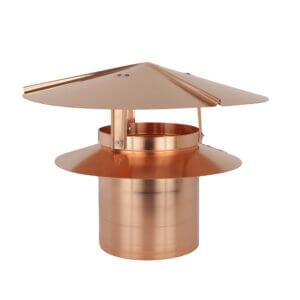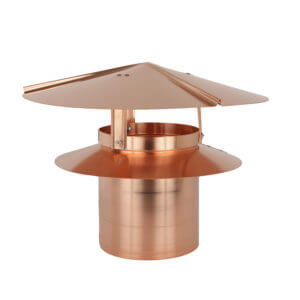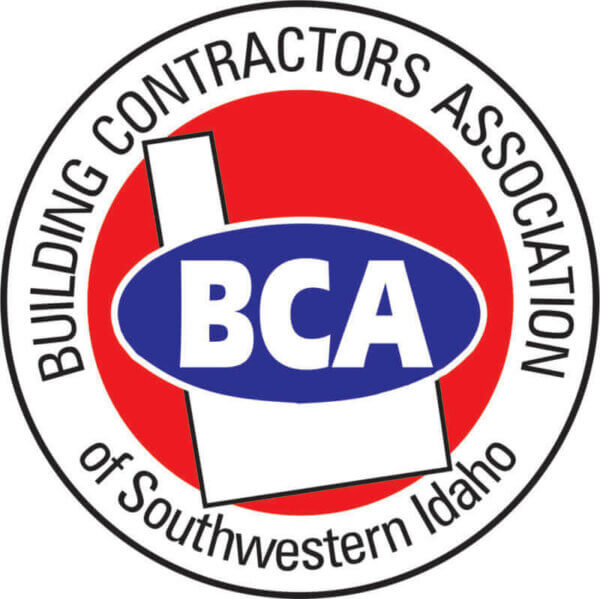Fireplace Chimney Caps
From Hearths to Chimney Caps: Planning and Building a Fireplace the Right Way For Your Home
Besides being an aesthetically pleasing addition to your home, a fireplace can save you quite a bit in energy costs. However, there is one caveat: all that warmth can literally go right out of the window or poorly implemented chimney build without the right equipment and know-how.
If you’re in the market for a fireplace and need to know the proper way to plan and install a fireplace and a chimney, or what a chimney cap or a damper is and what they do, you are definitely in the right place.
Brainstorming: Planning Your Fireplace
There are three primary types of fireplaces that homeowners typically install:
- Masonry, or wood-burning: Comprised of a brick or stone firebox, a brick or stone chimney, and a wood mantle (typically).
- Gas: Fire burns cleaner, doesn’t produce burning embers that could pose a fire hazard, and room temperature is easier to regulate (similar to a thermostat).
- Zero-Clearance: Typically situated in the wall, easier and less expensive to install, firebox enclosures always remain cool, more efficient choice for smaller rooms. Can be gas, wood-burning, or electrically powered.
If your home hasn’t been built yet, it is much easier to account for materials, measurements, personal tastes, and building code requirements. However, building a new fireplace in an existing dwelling can present a variety or problems, but it is not totally outside the realm of possibility. There will just be more planning involved, and an inquiry to a professional contractor is strongly recommended.
Regardless of whether the fireplace is going into a new home or an existing one, it’s important to:
- Ensure that your floor joists are reinforced prior to installation.
- Consult with your builder to ensure that all aspects of the fireplace build are up to code.
- Know exactly what you are getting and who’s going to do what.
- Plan out an effective ventilation system.
Getting these issues fleshed out beforehand will give you an idea of what’s legal, if your home can handle such an addition, and that the safety of the inhabitants takes precedence above all else, which means preventing the unnecessary buildup of smoke, soot, creosote, and carbon monoxide.
So what’s the first step to safely building your first fireplace?
Safely Venting Your Fireplace
As you can imagine, not having a proper ventilation system for your new fireplace can be inefficient and even deadly. As stated earlier, an inefficient ventilation system can leech all of that cozy warm air right out of your home when you need it most, or worse, allow for the buildup of smoke and carbon monoxide.
For example, in masonry fireplaces, it’s very easy for heat to rise out of the chimney because hot air is lighter than cool air. In order to stop this from occurring, barometric dampers prevent downdraft from occurring, usually accompanied by an overwhelming buildup of smoke and unpleasant odors in the home, and also regulate the removal of warm air so that it stays in your home longer.
Both gas and zero-clearance fireplaces employ a single vent pipe. Regardless of which type of fireplace you go with, the roof cap serves as the crown jewel that sits atop the chimney. In short, the roof cap’s main function is to regulate downdraft and updraft to maximize efficiency and safety. FAMCO has a wide variety of chimney caps available in all sizes and materials.
For example, the wind-directional chimney cap was designed by FAMCO engineers to maximize draft efficiency by following the wind itself. This is especially handy for those who live in a windier climate, and want to get the most out of their chimney. Regardless of which chimney cap is right for you, all of them are designed to keep snow, rain, and pests from entering your home.
FAMCO also offers a variety of chimney cap adapters that will fit your new FAMCO chimney cap perfectly to your chimney. Whether you’ll need a wind cap adapter or a masonry-to-metal chimney transition in stainless steel or galvanized is really up to what you’re looking to build.
In the end, all that matters is proper ventilation and regular maintenance on your part (more on that later).
Now that we’ve addressed properly venting a fireplace, it’s time to move onto…
What Materials to Choose for Your Fireplace
This one really comes down to preference and abiding by building codes for your area. Before diving in, remember that zero-clearance fireplaces won’t require as much construction work to install, while masonry and gas fireplaces will require either reinforced floor joists, the installation of a gas supply line, or both depending on the build.
Some common materials that are used for building a fireplace surround (the exterior visible in the room) include:
- Brick – The more traditional material used for fireplace surrounds. Creative patterns are possible, and bricks come in different colors and sizes.
- Steel – One of the more popular fireplace surround materials currently in use. Can come in a variety of finishes, and gives off a modern, industrial feel.
- Stone – Provides a rustic charm to your room and like concrete, heats up along with the fire. Radiates and keeps the interior warmer longer. Lots of looks, styles, and finishes available.
- Concrete – Can employ a natural finish if desired, and retains the heat thrown off by the fire. Variety of colors and textures available.
- Wood – Can be an attractive, homey option as long as the body is built properly and is allowed by your local building code. Wide variety of finishes and types of wood available to suit any taste.
As you can imagine, once you include the fact that the hearth and chimney are made from non-combustible materials like stone or brick, this can add quite a substantial load to your home’s structure.
Don’t forget to reinforce your floor joists and abide by your local building codes, and all will be well.
Properly Building Your Fireplace
If you’re not a DIYer, it may be best to hire a masonry contractor to install your fireplace of choice. Not only does this ensure that your fireplace is installed safely and legally, but many contractors are bonded, which means they are on the hook for repairs should something go terribly wrong.
This is especially true in an existing home, where too many variables can muddy an otherwise uneventful build. Poor structure, deterioration, and even pests can get in between you and your dream fireplace, and this only becomes more likely the older the structure is.
Building codes may also require that only a licensed, bonded masonry contractor build the fireplace in question. For your own safety, before attempting to build your own fireplace, whether it’s a new building or an existing one, check with your local code enforcement and construction professionals first.
The same principles discussed here can also be applied to outdoor fireplaces, such as BBQ’s or general centerpieces. The added benefit here is that there is more than adequate ventilation outside to prevent the buildup of smoke, and building codes tend to be more lax on outdoor fireplaces. Before building an outdoor fireplace as an alternative, be sure to check your local building code just to be sure.
If you have any questions regarding which materials are right for you, give FAMCO a shout.
Maintaining Your Fireplace
So say that you were able to get your fireplace built and it’s working like a charm. Much like a car, it won’t for long unless you perform some basic maintenance throughout your time with it. The procedures to do so are different between wood, gas, and electrical, so here’s a rundown for each.
Wood-Burning Fireplace Maintenance Tips
- Close the damper when not in use, and open when it is. To prevent smoke from filling up your living space and to retain heat for longer, be sure to open the damper before lighting, and closing once the embers have died out. If you have opened the damper and are still experiencing smoke, this could be a sign of blockage.
- Clean the interior (or hearth) regularly depending on use. The buildup of creosote, dirt, and dust can make your home environment very unpleasant and even dangerous.
- Install heat-proof glass doors. These can help further prevent unnecessary heat loss as well as fire risks posed by burning embers.
- Soot can cause a fire if left unchecked. Soot is softer and can spread across a large area easier than creosote. Soot deposits should never exceed 1/8 inch deep.
- Smoke has no place in an efficient, well-running fireplace. Unless someone accidently left the damper closed, smoke buildup can be a sign of blockage, whether it be from soot or creosote.
- Inspect the chimney itself. In masonry chimneys, cracks or crumbling mortar could be a sign of larger problems. Metal chimneys should be checked for dents, dust, and missing hardware, which could indicate weakness.
- Check the chimney cap. This cap is designed to keep out pests and unwanted materials. As a result, it can get clogged. Regular cleaning will help encourage proper airflow and allow smoke to escape.
Gas Fireplace Maintenance Tips
- Clean glass doors as needed. Much like the glass doors on a wood-burning fireplace, these need to be cleaned regularly to prevent the buildup of soot and creosote. A simple window cleaning solution can be used.
- Clean soot buildup from vented gas logs. Though these require little maintenance, removing soot from them is as simple as brushing them off outside with a soft-bristle brush. Caution: vent-free gas logs should not be removed by anyone other than a qualified service technician, and neither type should be washed or wiped with a damp cloth.
- Regularly replace batteries in your smoke detector, carbon monoxide detector, and any fireplace remotes you may have. The latter comes in especially handy when you need to turn off the fireplace quickly.
Electric Fireplace Maintenance Tips
- Replace the candelabra light bulbs every 2 years. Most electric fireplaces are typically powered by two or more bulbs that are hidden from view. Keeping these like new ensures that your fireplace runs just like the day you bought it, and prevents unnecessary fire hazards.
- Check all electrical connections. A loose or otherwise damaged connection can not only prevent the fireplace from turning on, but it could also pose a fire hazard. Replace or repair as necessary.
- Clean the surface area regularly. Even though the buildup of creosote and soot is remote on an electric fireplace, it’s still a good idea to regularly dust it off. Not doing so could impede ventilation and eventually post a fire risk or quit working altogether.
Regardless of what type of fireplace you have, there is one rule that unites them all: Have your fireplace inspected annually by a certified technician.
This can help prevent catastrophe and potentially make you aware of problem areas before they become catastrophes. Most electric fireplaces will have a technical support number on them should you have any questions about its operation, but the more technical problems that can arise from gas and wood-burning fireplaces are best answered by a professional.
How FAMCO Can Help You With Your Next Fireplace Project
Established in 1989, FAMCO is the Pacific Northwest’s largest manufacturer of HVAC equipment and accessories. Whether you are looking for chimney caps, roof flashings, pipe flashings, ventilation products, HVAC accessories, plastic air ventilation products, and specialty building products, we can help you find what you’re looking for, no matter the size of the job.
Our wide variety of FAMCO chimney caps would suit anyone in any climate, and are appropriate for most building materials. Chimney caps can come in copper, stainless steel, or galvanized steel to fit any look, and we have the right configuration for any climate, whether you have cold desolate winters or arid, dry days year-round.
We also provide a wide plethora of handy resources for the DIYer, such as an attic ventilation calculator and HVAC product installation guides. So whether it be a grand fireplace or a new bathroom, FAMCO can help you get there in style.

